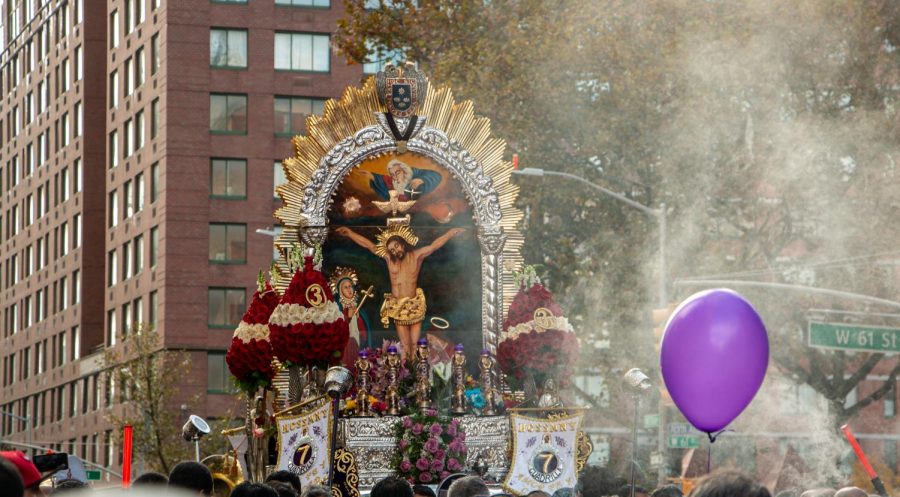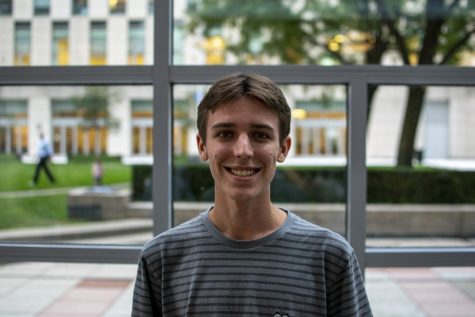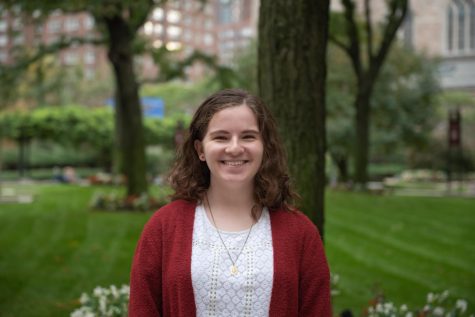Taking the Spiritual to the Streets
Thousands gathered at St. Paul’s Church to celebrate Señor de los Milagros
ETHAN COUGHLIN/THE OBSERVER
The celebratory sound of horns and the strong smell of incense dominated the Lincoln Center area on Oct. 27 in observation of Señor de los Milagros, a historic Peruvian tradition.
October 30, 2019
Whether they heard the music, smelled the incense or saw the mob of people in purple, students were wondering what was going on at St. Paul’s, the Catholic church next door, this past Sunday, Oct. 27.
According to the Rev. Paul Rospond, a member of the Paulist Fathers, thousands came out to celebrate Señor de los Milagros, the “Lord of Miracles.” Señor de los Milagros is a yearly procession originating in Lima, Peru. The Observer spoke to Dr. Cynthia Vich, a professor of Spanish and comparative literature, about the history of the event.
Señor de los Milagros “is a religious celebration that dates from Colonial times,” said Vich, “it is particularly related to the slave trade in Spanish America.” According to tradition, a slave of African descent painted the image of Christ onto the side of a building in Lima, and a group of other slaves called Hermandad del Señor de los Milagros, or “Lord of Miracles Brotherhood,” would gather in front of the painting to hold meetings.
The veneration of the image gained special admiration by many from Lima but gained its “miraculous” status when it survived not one, but two earthquakes in 1685 and 1687. The rest of the city was damaged or destroyed, including the building in which the Lord of Miracles image was housed, but the wall on which it was painted remained fully intact.
Since that second earthquake, the month of October is known as “Mes Morado,” or “Purple month” in Peru, with the most important event of the festival being a procession held every year on Oct. 28 in Lima. Devotees wear purple and march down the street carrying a replica of the original painting weighing more than a ton. Although other processions are held on Oct. 18 and 19, none are as important or grand as this one.
Besides the presentation of the image, music is played, incense is burned, prayers are read, hymns are sung and a special pastry called Turron de Doña Pepa is sold and enjoyed along the route. While the procession around Lincoln Center was hours long and involved hundreds of devotees, the procession in Lima lasts 24 hours and draws hundreds of thousands to the city. “It is a religious celebration very closely tied to the city of Lima and to the mixed-race and cultural identity of ‘limeños,’” said Vich, “although it has been so powerful that it has become a national symbol of Peruvian cultural identity.”
The festivities at St. Paul’s were organized by the Hermandad de Cargadores y Sahumadoras del Señor de los Milagros de New York, an organization founded in 1971. The Observer spoke to Amparo Tavares and Daniella Longmore, parishioners at St. Paul’s, who said the event has been going on for a few years now, and the devotees came from every borough of the city as well as some from New Jersey and Long Island. Tavares said that the police officers at the event were moved by the devotion of the people despite the long hours and poor weather.
With so much always happening around the city, it is easy to ignore something in your own backyard until it’s literally at your front door. Events like this are a good opportunity to learn about different cultures and practices. If you can see through the burning incense, you’ll find a rich history.













